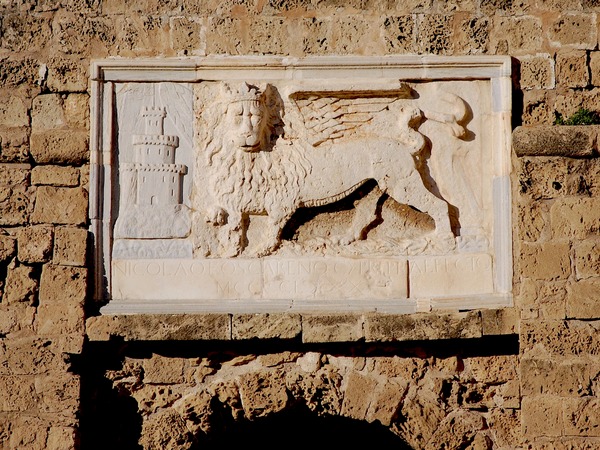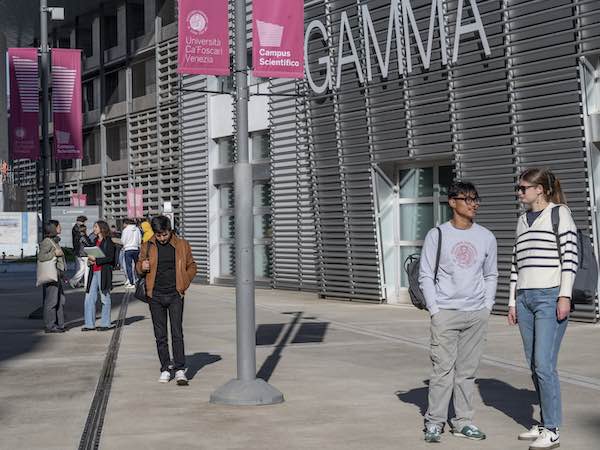A detailed study conducted by Ca' Foscari University of Venice delves into the public communication strategies of the Serenissima in its maritime territories (Stato da mar). The study focuses on inscribed monuments from the island of Cyprus and will be included in the first European Open Access platform dedicated to Venetian Renaissance inscriptions. The research results will be presented at the International Conference ‘La Lettera e il Leone: Contextualising Epigraphic Landscapes across the Venetian Stato da mar' on 3 and 4 October 2024.
"La Lettera e il Leone" is a research project on written communication and epigraphic cultures in Renaissance Venice, with a particular focus on the island of Cyprus. The project is generously supported by the Veneto Region and is coordinated by Lorenzo Calvelli, Professor of Roman History and Latin Epigraphy at Ca' Foscari’s Department of Humanities. Other strategic partners include the Cyprus Institute (technology partner), Ateneo Veneto, the Embassy of Italy in Nicosia (Cyprus), Società Dante Alighieri, and Ayios Epiphanios Academy.
The project investigated the epigraphic evidence produced during the Venetian rule in Cyprus (1474-1571), with an emphasis on the public sphere. Throughout the maritime empire of the Serenissima, the so-called scritture esposte (literally, writings for public display) played a crucial role in the Venetian authorities' agenda to convey political and ideological messages.
In Cyprus, monumental inscriptions were set in the 16th-century walls and fortifications of the island's main settlements, primarily Nicosia and Famagusta, as well as in public buildings, Catholic churches, and monasteries. These inscriptions, written in Latin using the Humanistic capital script, were strategically located to showcase Venice's power and control over the island, as well as to emphasise its political identity.
Venetian epigraphy in Cyprus was not simply a means of recording historical events; it was a symbolic tool. Combined with the figure of the crowned lion of Saint Mark, it became a powerful emblem that sanctioned Venetian authority and clearly differentiated the rule of the Serenissima from that of the previous rulers of the island, belonging to the French-born crusader dynasty of the Lusignans, who used the Gothic capital for their communication. Through this symbolism, Venice aimed to strengthen its link with the classical past, ideally reconnecting with ancient Rome.
The project focused on surveying, documenting, and digitally recording inscribed monuments using an integrated approach that considers the material, historical, political, and socio-cultural implications of epigraphic landscapes.
THE PLATFORM
The IT-related research led to a collaboration with the Cyprus Institute, the project's technology partner. In line with European policies on open science, the main output is an online resource (https://venetianinscriptions.cyi.ac.cy) that serves as the first European Open Access platform dedicated to Venetian Renaissance epigraphy. This innovative tool allows for the visualisation of a georeferenced map of the locations of the inscriptions, along with digital cataloguing and, where possible, 3D reproduction of the monuments and sites where they are located. This spatial approach aims to enhance our understanding of the communication strategies employed by the Serenissima to assert its presence and identity on the island. In the future, the resource could be expanded to include data from other territories that were part of the Venetian Republic, as well as from Venice itself.
The inscription at the entrance to Famagusta's citadel, also known as 'Othello Castle,' is a very significant example. Its text commemorates Nicolò Foscarini, a Venetian nobleman who served as Captain in Famagusta from 1491 to 1493. In his role, with the support of two Venetian councillors, he had civil and military jurisdiction over the entire eastern part of Cyprus. This inscription reflects the influence of the Venetian epigraphic model, combining formal precision with elements of the classical tradition. Such monuments, along with the iconography of the crowned lion of St. Mark (symbol of the Kingdom of Cyprus), held strong symbolic value and solidified the authority of the Serenissima, establishing a new cultural order in contrast to previous rulers.
THE CONFERENCE
International Conference ‘La lettera e il leone. Contextualising Epigraphic Landscapes across the Venetian Stato da mar'.
Venice, 3-4 October 2024
Ateneo Veneto, Ca' Foscari University of Venice
The international conference marking the conclusion of the project is scheduled to take place on Thursday, 3rd October, and Friday, 4th October 2024, at Ateneo Veneto and Ca' Foscari University of Venice. The event will feature scholars from various European countries, including Italy, Cyprus, Greece, France, England, and Scotland, along with specialists in history, epigraphy, palaeography, and architectural history affiliated with Ca' Foscari University of Venice.
The Conference will be held under the prestigious patronage of the Embassy of Italy in Nicosia (Cyprus) and of the Hellenic Institute for Byzantine and Post-Byzantine Studies and is realized with the contribution of the Veneto Region pursuant to the Regional Law no. 39/2019.
The full programme can be found here
Live streaming of the event and publication of the proceedings are planned.










